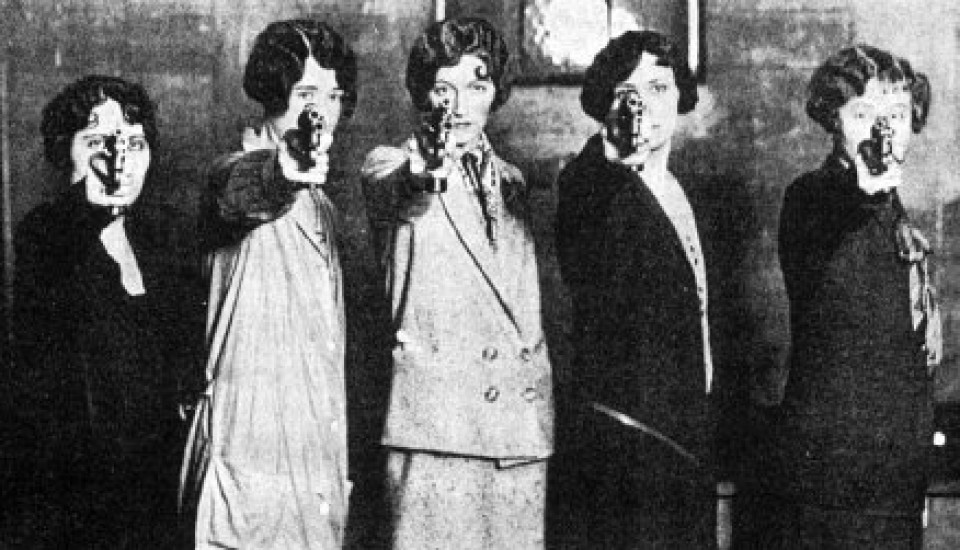
Pink is the new orange for young hunters in New York, who can now wear the color for safety under an updated law that advocates said was meant to attract more women and girls to a sport dominated by men.
The law previously required junior hunters — 14- or 15-year-olds — and their adult mentors to wear a shirt, jacket or cap with at least 250 square inches of solid or patterned fluorescent orange visible in all directions. The change allows them to wear solid or patterned fluorescent pink instead of the traditional blaze orange.
The new law, which went into effect on July 21, was part of a broader movement to get women involved in hunting, said Bill Gibson, legislative vice president for the New York State Council.
Similar legislation enacted this year in Wisconsin was criticized as sexist and playing to gender stereotypes. Sarah Ingle, president of that state’s Women’s Hunting and Sporting Association, told National Geographic that the change felt “demeaning” to women.
There was little sign of that concern in New York. The bill was sponsored by Senator Patty Ritchie, a Republican from Oswegatchie. A memo with the legislation said that by offering young hunters a color choice, “more women may be encouraged to join in this time-honored tradition.”
Lin Menninger, 63, of Canastota, N.Y., an avid hunter, endorsed the introduction of pink, saying that it would make hunting “a little more inviting” for girls.
“I think the pink is awesome; even the young girls like that,” said Ms. Menninger, who has hunted in South Africa and wrestled baby elk in Wisconsin to put radio collars on them for research.
Dan Ladd, a regional vice president for the New York State Outdoor Writers Association, said that hunting depended on retaining young recruits and that if pink apparel helped, “How can it be a bad thing?”
“This whole thing with the pink is a no-brainer to me,” he added.
Nationally, women made up 11 percent of the 13.7 million people who hunted, according to federal government data from 2011. In New York, more than 51,000 of the 570,000 licensed hunters are women, according to the State Department of Environmental Conservation. The number of female hunters has increased over the past decade to 9 percent, from 7 percent, of all licensed hunters, the department said.
Assemblywoman Aileen Gunther, a Democrat from Forestburgh, a sponsor of the legislation, said in a statement that the updated law was important to ensuring safety and “attracting the next generation into the great outdoors.”
Though New York does not mandate that all hunters — except for the young ones and their mentors — wear bright colors,more than 80 percent of big-game and 66 percent of small-game hunters wear blaze orange, according to the Department of Environmental Conservation website. New York is the third state, after Wisconsin and Colorado, to add pink as a safety color; those states require all hunters using firearms to wear the bright colors.
Retailers have been out in front of the trend by offering more pink-colored gear, including firearms and clothing, Mr. Gibson, of the New York State Conservation Council, said.
Katie Mitchell, a spokeswoman for the outdoors-gear retailer Bass Pro Shops, said hunting was increasingly being seen as a family activity. For instance, single mothers want to learn so they can take their sons, she said.
“Some women appreciate having pink options, though many women have told us they don’t necessarily care to wear pink and are more concerned with fit and performance in the field,” she added.
Dr. Majid Sarmadi, a professor of textile science at the University of Wisconsin-Madison, reported that blaze orange offered a good contrast in the woods in the spring and summer, but that pink was better in the autumn because of the orange found in fall leaves.
Mr. Ladd said pink was technically as good as orange for hunting because deer are believed to be colorblind.
Ms. Menninger, the hunter, said some women find participating in a male-dominated sport intimidating.
“Actually, I think a lot of guys give off an air that they don’t want women around,” she said. “You do have these men who do not like these women shooting these guns, shooting these pistols.”
Ms. Menninger said, however, that she had seen the number of female hunters increase by “quite a bit” in her region over the past five years as more programs sought to introduce them to hunting, shooting, fishing and other outdoor activities.
Gus Van Etten, president of the Saugerties Fish and Game Club, about 45 miles south of Albany, which has about 400 members, the majority men, said, “The more young women you can draw in, the better.”
Would Mr. Van Etten, a competitive shooter who hunts occasionally, consider wearing pink while hunting? He paused and laughed.
“I think I could stick with my traditional color,” he said.
